Home > Other Places To Visit In Scotland > Crannogs
These circular artificial structures were commonplace throughout Scotland in the later part of the Stone Age though more commonly in the Bronze and Iron Age and as late as the 17th Century.

Follow us on: Instagram, Twitter and Facebook.
Contact Me.
My new novel:
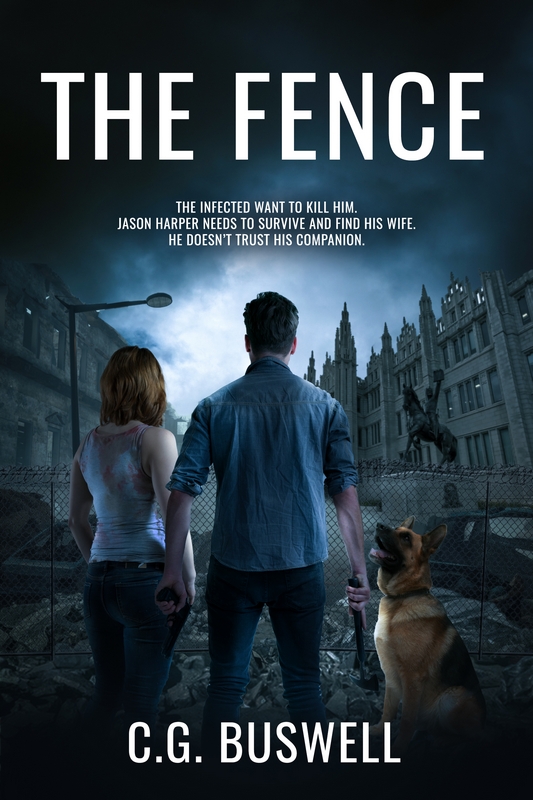
The Aberdeen skies are under attack from an enemy jet. It is spilling a strange yellow smoke. Minutes later, people start killing each other.
Former Royal Air Force Regiment Gunner Jason Harper witnesses this and then his wife, Pippa, telephones him, shouting that she needs him. They then get cut off. He sets straight out, unprepared for the nightmare that unfolds during his journey. Everyone seems to want to kill him.
Along the way, he pairs up with fellow survivor Imogen. But she enjoys killing the living dead far too much. Will she kill Jason in her blood thirst? Or will she hinder his journey through this zombie filled dystopian landscape to find his pregnant wife?
The Fence is the first in this series of post-apocalyptic military survival thrillers from the torturous mind of local horror and science fiction novel writer C.G. Buswell.
Download Now.
Buy the Paperback.
They were fortified defensive structures built on our lochs which provided families and their stock shelter from the elements and protection from others. Wooden stilts would have been driven into the water bed and then a framework platform built to raise the family. Woods used included alder, oak and elm. Bracken and ferns would have covered the woodworked floor with woven hazel as walls. To utilise the roof space they would have used platform beds.
The term can also refer to the natural islands that are in Scottish lochs which would have been modified by the settlers. They can also be found in Ireland and one has been located in Wales.
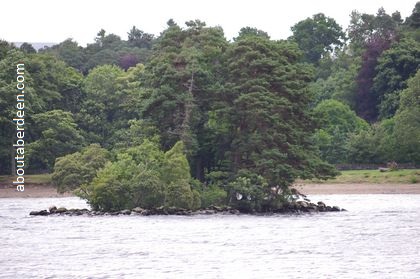
They were used by these farmers who farmed using wooden ploughs and grew wheat and six row barley in the nearby fields. They also collected wild oats, fruits and edible plants like nettles, sorrel and wild carrots.
At the Scottish Crannog Centre you can learn about their history by visiting their exhibition before being able to go into the specially built one where a guide will explain about how life within and in the nearby farmed area would have been.
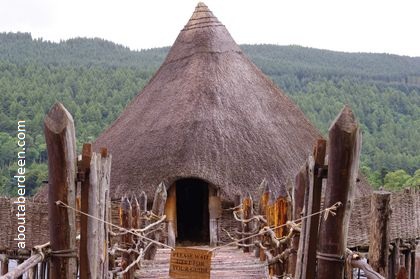
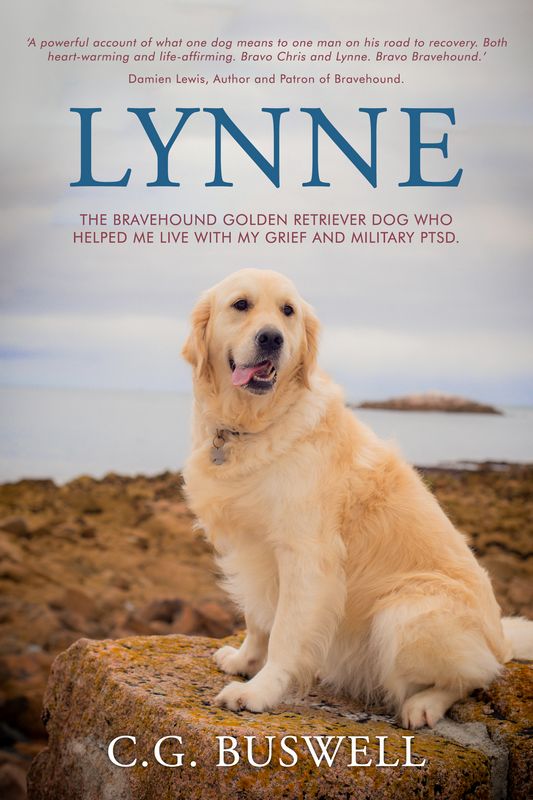
Have you seen my beautiful golden retriever Lynne out and about in Aberdeen? Ask her for a high-five! She's a Bravehound PTSD assistance dog, so we'll often be in shops, restaurants, and the cinema together.
We've written a book where I talk about growing up in Aberdeen and then joining the army to be a medic and nurse, and developing military Post Traumatic Stress Disorder.
I also talk about losing my son to suicide and the therapy I have had at Royal Cornhill Hospital and grief support groups in Aberdeen.
The author, Damien Lewis, said of Lynne:
"A powerful account of what one dog means to one man on his road to recovery. Both heart-warming and life-affirming. Bravo Chris and Lynne. Bravo Bravehound."
Download.
Buy the paperback.

An army veteran moves his family back to his Aberdeenshire home, but his nightmare neighbour starts a battle of wits with him. Who will win this One Last War?
Buy this latest novel by local author C.G. Buswell on Kindle or Paperback.
Advertise Here from just £70.

It is based on the excavated findings of the Oakbank Crannog. There also found evidence of 18 in Loch Tay which includes Priory Island, Spry Island, Eilean Puttychan, Eilean Breaban and Milton Morenish. . Artefacts like a net or loom weight, food debris, parts of a necklace or bracelet, wooden whistle and eating utensils can be viewed. There are also parts of weapons like an arrowhead and even wooden timbers dated back 2000 years. These have cut marks made by iron axes.

On display in the waters are cut out canoes modelled on those log boats found by the archaeologists which they think were used as early ferryboats. Surprisingly scientists have discovered that they did not eat fish as none of their bones were discovered in the settlement.

Children (and adults) can dress up in period costume or make jewellery with the help of the guides. There is a small cafe and large gift shop. Toilets are in the visitors centre.
The Scottish Crannog Centre is open throughout the year, please check their website www.crannog.co.uk for full details.
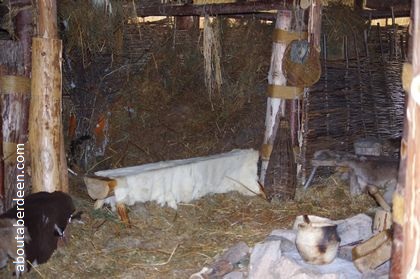
Kenmore
Loch Tay
Aberfeldy,
Perthshire
PH15 2HY
01887 830583


We holidayed at the Pitlochry Hydro Hotel and visited nearby Pass of Killiecrankie, Loch of Lowes Osprey, Beatrix Potter Garden, Queen's View, Falls of Bruar, Rannoch Moor Train Station, Dunkeld Cathedral, Blair Castle and Diana Grove with Hercules Garden, Atholl Country Life Museum, The Hermitage and Ossian's Hall and Cave.
More Scottish Tourist Attractions
Crannogs
History and photographs of Scottish Crannogs with information and facilities of the reconstructed Iron Age Oakbank Crannog Centre in PerthshireThese circular artificial structures were commonplace throughout Scotland in the later part of the Stone Age though more commonly in the Bronze and Iron Age and as late as the 17th Century.
Follow us on: Instagram, Twitter and Facebook.
Contact Me.
My new novel:

The Aberdeen skies are under attack from an enemy jet. It is spilling a strange yellow smoke. Minutes later, people start killing each other.
Former Royal Air Force Regiment Gunner Jason Harper witnesses this and then his wife, Pippa, telephones him, shouting that she needs him. They then get cut off. He sets straight out, unprepared for the nightmare that unfolds during his journey. Everyone seems to want to kill him.
Along the way, he pairs up with fellow survivor Imogen. But she enjoys killing the living dead far too much. Will she kill Jason in her blood thirst? Or will she hinder his journey through this zombie filled dystopian landscape to find his pregnant wife?
The Fence is the first in this series of post-apocalyptic military survival thrillers from the torturous mind of local horror and science fiction novel writer C.G. Buswell.
Download Now.
Buy the Paperback.
They were fortified defensive structures built on our lochs which provided families and their stock shelter from the elements and protection from others. Wooden stilts would have been driven into the water bed and then a framework platform built to raise the family. Woods used included alder, oak and elm. Bracken and ferns would have covered the woodworked floor with woven hazel as walls. To utilise the roof space they would have used platform beds.
The term can also refer to the natural islands that are in Scottish lochs which would have been modified by the settlers. They can also be found in Ireland and one has been located in Wales.
They were used by these farmers who farmed using wooden ploughs and grew wheat and six row barley in the nearby fields. They also collected wild oats, fruits and edible plants like nettles, sorrel and wild carrots.
Scottish Crannog Centre
At the Scottish Crannog Centre you can learn about their history by visiting their exhibition before being able to go into the specially built one where a guide will explain about how life within and in the nearby farmed area would have been.

Have you seen my beautiful golden retriever Lynne out and about in Aberdeen? Ask her for a high-five! She's a Bravehound PTSD assistance dog, so we'll often be in shops, restaurants, and the cinema together.
We've written a book where I talk about growing up in Aberdeen and then joining the army to be a medic and nurse, and developing military Post Traumatic Stress Disorder.
I also talk about losing my son to suicide and the therapy I have had at Royal Cornhill Hospital and grief support groups in Aberdeen.
The author, Damien Lewis, said of Lynne:
"A powerful account of what one dog means to one man on his road to recovery. Both heart-warming and life-affirming. Bravo Chris and Lynne. Bravo Bravehound."
Download.
Buy the paperback.

An army veteran moves his family back to his Aberdeenshire home, but his nightmare neighbour starts a battle of wits with him. Who will win this One Last War?
Buy this latest novel by local author C.G. Buswell on Kindle or Paperback.
Advertise Here from just £70.

It is based on the excavated findings of the Oakbank Crannog. There also found evidence of 18 in Loch Tay which includes Priory Island, Spry Island, Eilean Puttychan, Eilean Breaban and Milton Morenish. . Artefacts like a net or loom weight, food debris, parts of a necklace or bracelet, wooden whistle and eating utensils can be viewed. There are also parts of weapons like an arrowhead and even wooden timbers dated back 2000 years. These have cut marks made by iron axes.
On display in the waters are cut out canoes modelled on those log boats found by the archaeologists which they think were used as early ferryboats. Surprisingly scientists have discovered that they did not eat fish as none of their bones were discovered in the settlement.
Children (and adults) can dress up in period costume or make jewellery with the help of the guides. There is a small cafe and large gift shop. Toilets are in the visitors centre.
The Scottish Crannog Centre is open throughout the year, please check their website www.crannog.co.uk for full details.
Kenmore
Loch Tay
Aberfeldy,
Perthshire
PH15 2HY
01887 830583
We holidayed at the Pitlochry Hydro Hotel and visited nearby Pass of Killiecrankie, Loch of Lowes Osprey, Beatrix Potter Garden, Queen's View, Falls of Bruar, Rannoch Moor Train Station, Dunkeld Cathedral, Blair Castle and Diana Grove with Hercules Garden, Atholl Country Life Museum, The Hermitage and Ossian's Hall and Cave.
More Scottish Tourist Attractions
© Site contents copyright AboutAberdeen.com 2004-2025. All rights reserved. Privacy Policy / Disclaimer
